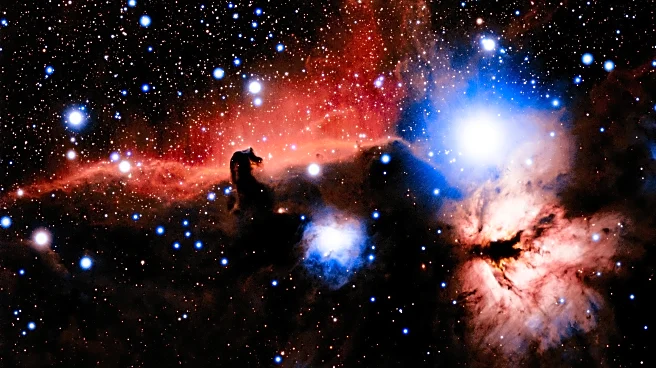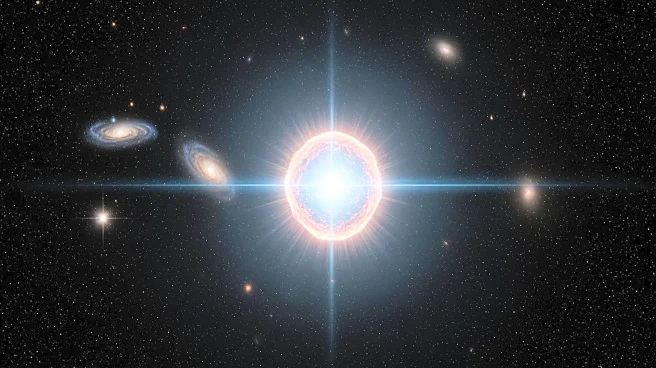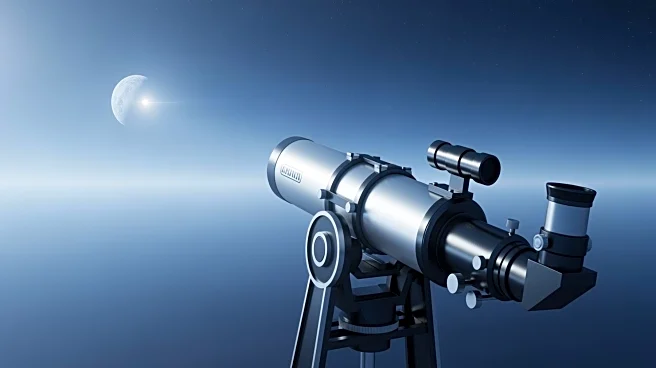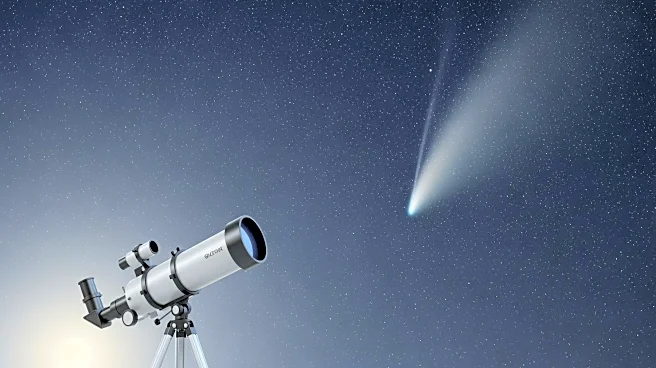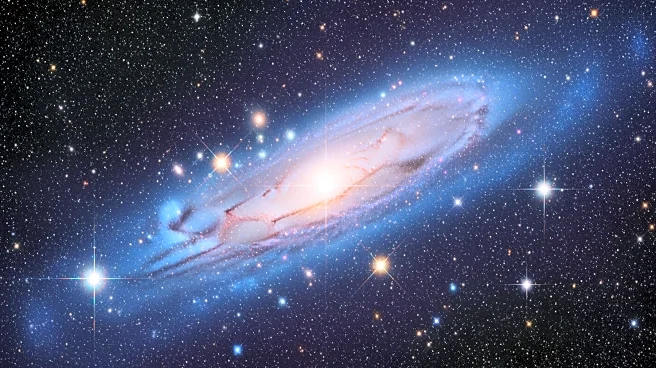What's Happening?
Researchers at the University of Western Sydney have discovered a nearly perfect spherical object, named Teleios, in the Milky Way. This object, visible only in the radio wave domain, is not one of the previously known 'strange radio circles.' The object, G305.4-2.2,
is suspected to be a supernova remnant, but its perfect spherical shape is unusual. Using data from the Australian Square Kilometre Array Pathfinder, astronomers estimated its distance from Earth to be between 7,175 and 25,114 light-years, with a diameter ranging from 46 to 157 light-years.
Why It's Important?
The discovery of Teleios challenges existing theories about supernova remnants, which are typically not perfectly spherical due to asymmetrical explosions and non-homogeneous interstellar mediums. Understanding such objects is vital as they play a crucial role in the evolution of galaxies by enriching the interstellar medium and influencing its structure. This finding could lead to new insights into the life cycle of stars and the dynamics of our galaxy.
What's Next?
Further high-resolution, multi-frequency observations are needed to confirm the nature of Teleios. These observations could provide more direct evidence of its origins and help refine models of supernova remnants. The study of such objects could also lead to the discovery of more supernova remnants, enhancing our understanding of galactic evolution.






